
(Click title to go directly to the review)
Advance Review: WONDER WOMAN #35
AXIS #3
DEATHSTROKE #1
Indie Jones presents HEADLOCKED: THE LAST TERRITORY #1
AMAZING SPIDER-MAN #8
SECRET ORIGINS #6
Indie Jones presents DEADHORSE: THE BALLAD OF THE TWO-HEADED DOG #2
Raiders of the Long Box presents Halloween Horror Comics!
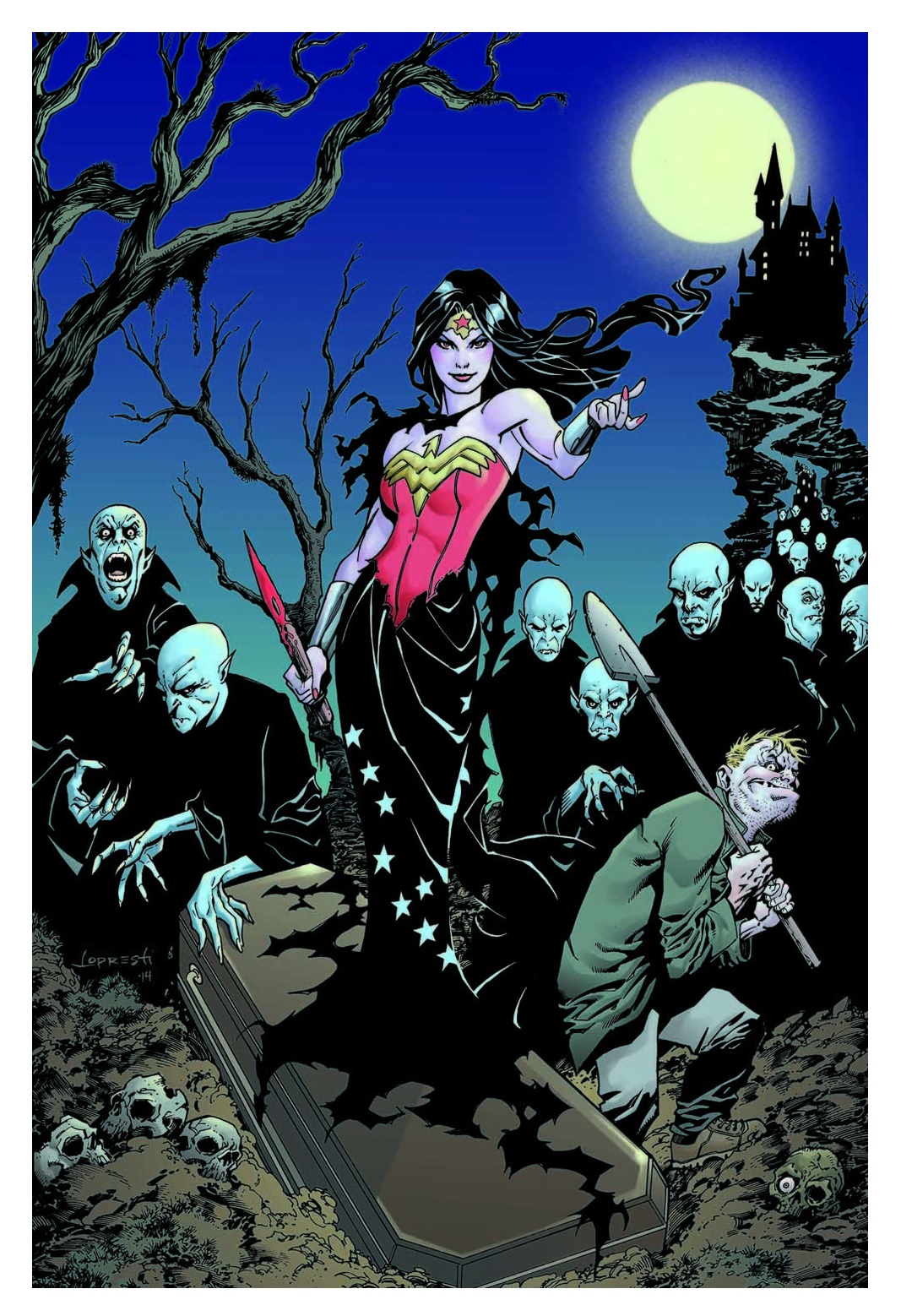
 In stores today!
In stores today!WONDER WOMAN #35
Writer: Brian AzzarelloArtist: Cliff Chiang
Publisher: DC Comics
Reviewer: Optimous Douche
I have been so blind. For as much of the New 52 I’ve read, reviewed, reviled or rewarded, I have missed the boat on what has allowed certain books to make it to the lofty numbers of cresting 30 versus all of those who stuttered or stopped just after cresting double digits. The answer, quite simply, is time.
Writing. Art. These are subjective principles open to broad debate and scrutiny when justifying quality. Time, though--specifically how much of it passes from issue to issue--is where we all of us who scope the entire universe come to one common ground. To build tension, to build gravitas, to engage an audience in glorious character moments, comics need to slow the fuck down.
WONDER WOMAN, BATGIRL and GREEN LANTERN – they all in my opinion have (had) great writers and all around creative. Even after Johns handed off the skittle rings, the boys at Valiant walked into a cake job because Johns had set the groundwork to support my theory of slowed story tempo.
Week to week, month to month, for the past 35 issues Azzarello didn’t just reintroduce us to WONDER WOMAN as is the reboot mantra; instead he introduced us to what she has never been. He flew around the face of crossover mandates by sheltering himself in a time stasis that has slowed the past 35 months of real time to perhaps 5 months of comic time. How come the relationship with Clark wasn’t addressed, and Diana could get flirty with Orion without defying all logic? Because Clark Kent just traded in his jeans for kevlar and is still moon-eyed over Lois (who is still way too bitchy under the Perez pen in this scenario).
Not to say they weren’t a jam-packed five-ish story months, as essentially the entire order of Greek mythology was flipped upside down. While a timeless tale of the old replacing the young, with characters as old as time itself, Azzarello made it all feel modern without losing reverence. To be clear, I don’t mean reverence to old Wonder Woman stories--I mean to characters like Apollo, Hades and Strife.
It’s not a surprise to guess whether the first-born would fall; what I find interesting, though, is the really really “new” god who now sits upon the throne of Olympus. Gone is the age of Zeus, gone is the age of his dalliances with other gods and progeny; humanity has finally been half-chosen to rise above our mortal mire.
Will any of this matter from a universal perspective? Probably not, if my time theory and precedent are correct. GREEN LANTERN and BATGIRL have already been slowed and hurried in tempo with crossovers that touched them. WONDER WOMAN has had no pushes and has thus created an island of misfit characters. You will never see these events matter until a generation from now some young upstart reignites this forgotten land Azzarello has created. The $$$ have spoken and they say that the big wins, what the market wants, is a more surface scratch of these characters--storylines that can serve as fodder for the plethora of unnamed movie slots that are paired against the meticulously detailed Marvel ideation.
Mr. Azzarello, thank you for being a bright part of the New 52. I hope you receive the proper adoration this exploration of spirit and destiny truly deserves.
When Optimous isn't reviewing comics he is making the IT words chortle and groan with marketing for MaaS360, enterprise mobility management www.maas360.com. He also has a comic coming out sometime soon, for updates head to robpatey.com.

AXIS #3
Writer: Rick RemenderArtist: Leinil Francis Yu
Publisher: Marvel Comics
Reviewer: Masked Man
When we last left our heroes, they were all destroyed/captured by Red Onslaught and his hero-busting sentinels. But never fear: Magneto and the world's fiercest villains have appeared to save the day!
First off, let me say Francis Yu is a bit of an improvement as the artist on this series. Most of his panels have more weight and are much more interesting to look at than the previous issues. Unfortunately, just like Kubert it seems he was pressed for time, as panels became sketchier and sketchier as the issue went along. I'm kinda surprised we haven't heard any rumors of production troubles on this series, considering how it looks. But still, Francis Yu draws some mighty fine spreads and a mighty fine Enchantress.
Getting into the story (prepare for spoilers, matey), it's a mixed bags of things I didn't understand and some things I thought were pretty cool. One thing I liked was the Deadpool/Iron Man scenes. Deadpool comes to Iron Man's rescue and, being his usually annoying self, drives Iron Man crazy. There's a sweet payoff to it all when Deadpool finally tells Iron Man he's a jerk. Then there's the Enchantress going one on one with Red Onslaught, which was pretty cool, though it does segue into what I didn't like/understand about this issue. What the heck happened to the Enchantress? She was owning Red Onslaught when a sentinel was about to shoot her. Red Onslaught starts to warns her, when the Absorbing Man attacks the sentinel (seemingly saving the Enchantress). Then her spell fails--huh? Next we got Magneto, who somehow figures out where the superheroes are imprisoned in the sentinel's bodies and manages to specifically free ONLY the Scarlet Witch and Dr. Strange, because he needs them to cast a spell. That was really impressive, Erik. The bizarre comedy stylings of Loki seem off as well, saying things like “I did get straight A's in chicanery 101.” Maybe Spider-Man would say that, but not Loki. Lastly there was the three panels, three different colors explosion- but I assume like new buff Apocalypse clone Evan, that will all be explained in future issues.
As the story moved forward, I did like the wrap-up of the battle with Red Onslaught (spoiler--Scarlet Witch and Dr. Strange's big spell). The Avengers want the Red Skull (to secure him and make him stand trial), but the X-Men want him too (in hopes that they can get Xavier's brain separated from the Red Skull). While it didn't bring the X-Men or Avengers to blows, it was a more realistic set-up for a fight and far better handled than all of A VS X. What about the villains? Who knows--they all pretty much disappeared, aside from Magneto and Deadpool.
So this new issue was better than the last, but seriously--how could it not be? But as of this point in the story, with so-called “Book One: The Red Supremacy” over, there's really nothing encouraging us to read “Book Two: Inversion” (Note: Inversion was the spell cast by the heroes to defeat Red Onslaught). As I mentioned at the start of this crossover event, it was pretty much the climax scene of a long-running UNCANNY AVENGERS story. Now that it's over, the story feels over. Obviously there will be some fallout from the Inversion, but with no clues given to what they are, who cares? Sure I'm still a bit curious what Remender has up his sleeve, but laying money down that it will actually make the series worthwhile? I wouldn't take that bet (sorry, Rick).

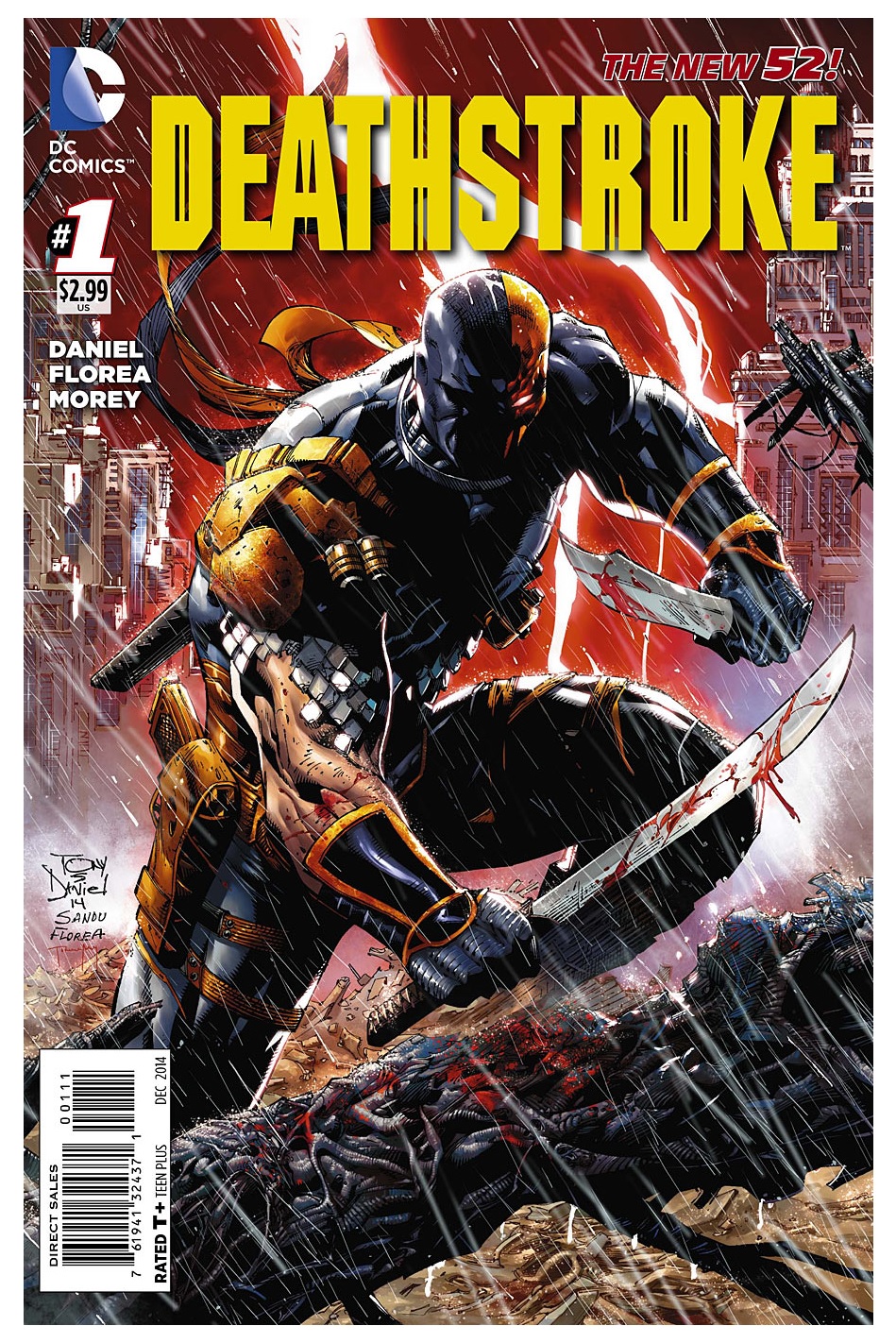
DEATHSTROKE #1
Writer: Tony DanielArtist: Tony Daniel
Publisher: DC Comics
Review: Mighty Mouth
One challenge we comics reviewers occasionally undergo is finishing an issue and discovering that you really don’t have a whole lot to say. Thankfully, after turning the final page of DEATHSTROKE #1, I find myself not at a loss for words.
DEATHSTROKE is one of my all-time favorite comic characters. When I heard that DC was giving him another shot at a monthly title, naturally I had to give it a fair chance. I’d be dishonest if I said there was no trepidation based on the last attempt to refresh the Terminator. Still, with no signs of Rob Liefeld in sight I figured what the hell, maybe this time things will be different. Maybe the good folks at DC had learned from their past mistakes.
Yeah. Not so much…
As I don’t wish this review to be devoid of any positives, I’ll open with what I liked about this book (should only take a few sentences), namely the art. Tony Daniel is one hell of an illustrator. He is so exceptional that if it were possible to clone him and let him draw for every title in the DC roster, I’d say go for it. Seriously--page after page, panel after panel, his art does not disappoint. Unfortunately, good comics require more than just fabulous visuals. They need characters that have—well, some character.
Daniel’s narrative is not the real problem. In fact, with what he’s been given to work with, I’d say his storytelling has a lot of the right stuff; it’s the mishandling of Slade Wilson that gets my briefs in a bunch.
For me, what has always made Deathstroke a fascinating character is his complexity. If you were a fan of Pre-52 Deathstroke, you can appreciate how the character gained enough popularity to support his own title. Back then Slade was depicted as an uber-mercenary who only took jobs he deemed worthy of his abilities and that fell in line with his own personal code of ethics. In other words, he had some depth. During his original solo book, Slade operated as more of an anti-hero, often employing his skillset to more noble assignments. That series lasted more than 60 issues ,and all the while DEATHSTROKE was still shown as an undeniable badass. Hell, he even got to take kicking the shit out of Batman off his bucket list! You can’t get too much more Chuck Norris than that.
A few years ago DC gave Deathstroke his own solo series again. In this NEW 52 reboot, Slade Wilson was portrayed as little more than a super-powered killing machine whose motivations were strictly ego and financial. Guess what? The book died quickly. DC wouldn’t try this same approach again, would they? Yep--they sure did.
I know it’s only been one issue, but so far Slade appears to be handled as purely a bloodthirsty uber-assassin once again. It’s like imaging a Batman with living parents, or Conan the Ethiopian…okay, that’s a bit extreme, but the point is I don’t recognize this guy. Ohm but they didn’t stop there--the final page of this issue distorts Slade even further by altering his physical characteristics as well. I guess that kind of makes sense; if you’re not going to write him like Slade Wilson, you may as well not draw him like Slade Wilson.
I guess I would be more forgiving about this new direction if it weren’t so analogous of the recent run that failed after a mere 20 issues. I know it’s not the 90s, and I get that the shit-storm that is the New 52 is attempting to reinvigorate characters. But how’s that been working out? I mean, does swapping Slade’s complexity for superficial edginess yet a second time seem like the most functional approach to take?
The reason folks can sympathize with antiheroes is that even though their methods are often dubious, we recognize that sometimes the best solution to a problem is to take it off at the head. Occasionally we need a hero that can go to places others can’t. DEATHSTROKE can be that hero. However, I fear that without the proper motivations Slade’s new run may not fare much better than his last.
Yes, Slade Wilson is a badass mercenary with a cool look; but he’s at his finest when he is treated as more than just that. Here’s hoping Daniel and company see the light before yet another New 52 cancelation is announced.
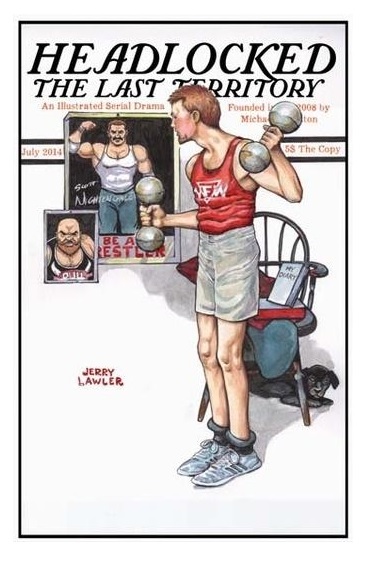
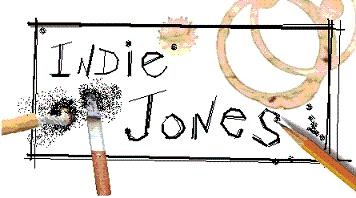 Support the HEADOCKED Kickstarter here!
Support the HEADOCKED Kickstarter here!HEADLOCKED: THE LAST TERRITORY #1
Writer: Michael KingstonIllustrator: Michel Mulipola (Cover by Jerry Lawler)
Publisher: Visionary Comics
Reviewer: Mr. Pasty
They tell you not to judge a book by its cover, but I think in this case it's probably not a bad idea, because the cover is awesome and so, too, is HEADLOCKED: THE LAST TERRITORY. As the title would suggest, this is an ‘illustrated serial drama' about the pro wrestling business and features cover art by Jerry “The King” Lawler, who does a fantastic mockup of Norman Rockwell's SATURDAY EVENING POST covers, and it's pretty spot-on. Having grown up with those in my grandfather's magazine rack, I was both excited and afraid. Unfortunately, I've read my share of wrestling comics, even those with the backing of a major powerhouse like WWE, and most of them have been positively dreadful. That's because they were handed over to comic book guys who probably weren't into wrasslin' and therefore missed what makes sports entertainment special. Case in point: the last WWE comic I read had time-traveling warlords stabbing wrestlers to death in the locker room (seriously).
Fortunately, there isn't any of that crap here. In fact, creator Michael Kingston goes one step further to earn street cred with the wrestling fans by introducing writing and art from some of the bigger names in the business like Shane Helms, Ken Anderson, Rob Van Dam, and Christopher Daniels, among others. Those guest pieces come at the end as a special bonus for readers, so it doesn't make the book feel gimmicky or serve as an excuse to paste together a bunch of names for the sake of marketing. No, the heart and soul of this book is Mike Hartman, a college dropout who wants to make it as a pro wrestler. And he quickly learns along the way the price most people have to pay to make it. For every major, televised wrestling show – in this story the WFW – there are ten independent promotions who pay peanuts and put you through hell. As a contributor to an online wrestling property, I understand the good and evil of the business, and it was tough to see some of those familiar themes play out in this book, only because it hurts the entertainment aspect when you start pulling back the curtain. But at the same time, I admire Kingston's willingness to paint a complete picture and I think that's one of the main reasons this book works so well.
The other reason is the art. I wasn't familiar with Michel Mulipola prior to this endeavor, but man, he really nails it here. I know it sounds hokey, but in order to draw wrestling you have to understand wrestling. Otherwise it looks like a bedroom diorama of action figures in poses that bear no resemblance to the acrobatics and pageantry of the squared circle. Kudos to Mulipola for not drawing down to make the illustrations look more superhero-ey. Of course, that begs the question if HEADLOCKED: THE LAST TERRITORY is only suited for wrestling fans, and that's hard to answer objectively because I'm a fan. That said, I will say it's a lot of fun to read and I think the writing is sharp enough to rope in casual readers who will likely find appeal in the book's universal themes. It's not a stretch to suggest we all have a little Mike Hartman in us trying to be great, getting our asses whooped along the way, meeting some crazy characters, and learning more about ourselves when all is said and done.
You can check out the first issue of this series for free on the website and if you like what you see, support their Kickstarter here!
Web heads who can’t get enough of Mr. Pasty’s word vomit are encouraged to watch him operate as Nostradumbass over at MMaMania.com here. Love, hate and Mafia Wars requests should be directed here.
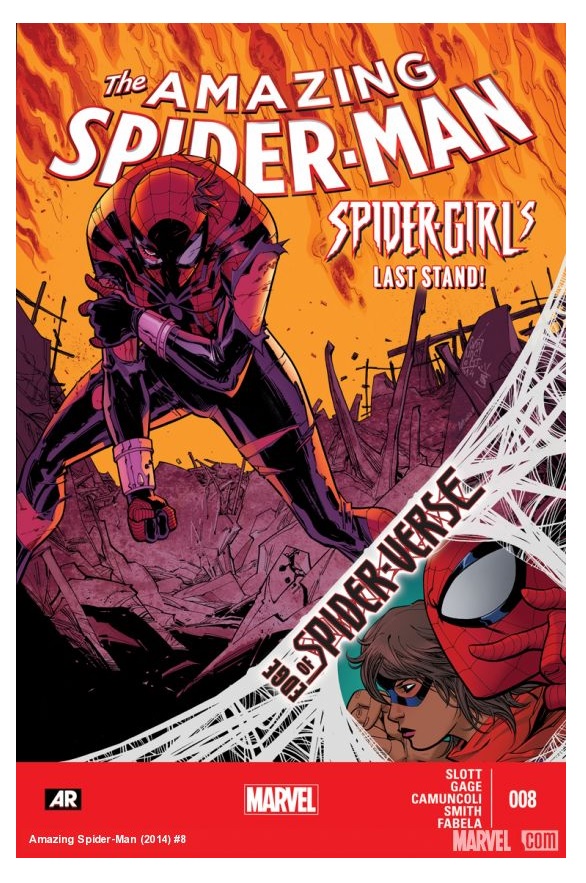
AMAZING SPIDER-MAN #8
Writers: Dan Slott & Christos GageArtists: Guiseppe Camuncoli & Humberto Ramos
Publisher: Marvel Comics
Reviewer: KletusCassidy
To be completely honest, I've been kinda 'meh' about ASM after SUPERIOR SPIDER-MAN (which I liked more than I thought I would). I really liked SPIDER-MAN: LEARNING TO CRAWL, but the main series just hasn't really been doing it for me. It's not that I dislike it, but I'm not crazy about it. One of the reasons is the art: Humberto Ramos is a good artist and probably will achieve more in comics than I ever will, but I much prefer Camuncoli's art as opposed Ramos' more extreme cartoony style (really I'd love to see Nick Bradshaw take a swing at the web slinger!) Anywho, this seems to be the last story before we jump into the deep end of The Spiderverse, which leads me to my review of AMAZING SPIDER-MAN #8.
Just to quickly get you up to speed, Spider-Man's brain was taken over by Dr. Octopus for a brief period of time, now Peter Parker has his brain back and is attempting to put his life back together. One of the changes remaining from then was that Dr. Octopus started an experimental research and development company in Peter's name, and now the real Peter Parker is the head of Parker Industries. Also, in “Original Sin” Spidey finds out that he wasn't the only one bit, and Silk (as she is called) is now Spider-Man’s spider-lover who is constantly making out with Peter in front of his old flame, which was really Doc Ock's old flame whilst he was in Peter's body. See? Now you're all caught up. The main story of this issue involves Spider-Man teaming up with the all-new (and apparently very popular) Ms. Marvel, who is now a young Indian woman that is fairly new to the superhero game. This is a pretty fun issue, and it was cool to see Spidey get to be the older mentor hero to a younger, more inexperienced crimefighter. While I may not be super-thrilled with this book, the stories are interesting and still have that lighthearted Spider-Man feel to them. I guess I can’t put my finger on exactly what I dislike about it, but out of all of my books, it's not one of the first ones I'm excited to read (Marvel-wise that's DAREDEVIL). I feel like Spider-Man is one of those characters (much like Superman) that the folks in charge are afraid to advance too far (“One More Day”), but at the same time they don't want to hold him back too much either, so in my opinion Spider-Man is kind of kept in this weird limbo which sometimes just feels stagnant. I will give Dan Slott credit in somewhat advancing Peter's story while still maintaining the innocence we know and love, but...I don't know, I guess I want more out of this book than what I've been reading lately.
The backup story continues with Morlun hunting down various Spider-People from different universes and killing them. This backup story takes place in the Spider-Girl world (Earth-982) where Peter and Mary Jane have a daughter who grows up to be a superhero like her father. I'm actually getting pretty excited about this story and I've been having fun identifying the different Spider Worlds. Last ish Morlun killed the Spider-Man from the cartoon SPIDER-MAN & HIS AMAZING FRIENDS; he also killed Spidey from the cartoon SPIDER-MAN 2099 and also Spider-Cat (?) bit the dust. If I got any wrong...let me know. This was a pretty good emotional read and by the end I said to myself "Damn, they are not fucking around in this event!"
The art in the main story was great, and Camuncoli's art keeps getting better. My only complaint from his past work was that everyone's faces looked ugly and weird, not in the sense that it was a bad drawing but in the sense that the faces were very stylized like Steve Dillon or Frank Quitely, but I'd say now the faces look a lot better and his Spider-Man (in costume) looks Amazing. The art from the backup was Ramos, so it was ok but like I have said in the past, once the action starts the panels get very cluttered and it's hard to see what's going on. Again, Ramos just isn't my cup of tea.
This issue was fun, and Ms. Marvel seems like a cool new character that played well against the experienced Spider-Man. This may not be the first book I read when it comes out, but I never hate it or anything...maybe I just have my expectations too high for my all-time favorite character that in one of these damn Spider universes, he is me, or I am him...whatevs. Camuncoli's art gets better with every damn issue, plus his Spider-Man looks great, and if you’re a Ramos fan, his art probably won't disappoint you. If you like Spidey, you should be stoked on Spider-Verse just to see all the different versions of our friendly neighborhood Spider-Man--plus the awesome Olivier Coipel is doing the art next month for the beginning of the story, so you know its gonna look rad! I really don't dislike Dan Slott's writing but for some reason (possibly the art), I'm not excited by Spider-Man currently. Hell, who knows--maybe during this new storyline, my fancy will be tickled once again.
If you’d like to hear more from Kletus Cassidy (I know, why would you right?), you can listen to him and his good buddy Steve discuss comics, comic news and more on the SANCTUM SEQUENTIAL podcast now on iTunes. Email questions, comments and hate mail here! Thanks!

SECRET ORIGINS #6
Writers: VariousArtists: Various
Publisher: DC Comics
Reviewer: Masked Man
Back in the Post-Crisis days, the SECRET ORIGINS series was pretty invaluable. As DC became a new unified universe, SECRET ORIGINS went a long way in explaining the status quo. And with some good writing and artwork, it also freshened up the old origins and made them and the characters more interesting for the then-modern era. Looking at that as goals, I don't think this current SECRET ORIGINS series is achieving them.
As I mentioned in my first review of this new series, the biggest problem is the length of the stories. The old series had two origins at 22 pages each. The new series has three origins at 12 pages each. Add to that the current pace of comic book storytelling, and you can see how these 12 page origins barely say anything at all. In many cases you get no more information about a character's origins than those two pagers by Paul Dini a nd Alex Ross in the oversized JLA SECRET ORIGINS. Most of the time writers just focus on some main emotion of the character (i.e. I've felt like x, so I did x with my life, until x happened--now I still feel x). They also don't seem to know all the details of a character's origin, either. Why in the first issue, Ma and Pa Kent laid on the floor in front of Superman--dead! But there's no mention of what happened (just an average day in Smallville, I guess). Warning: It’s what one may loosely consider spoilers all the way down.
In this current issue, we start off with Wonder Woman, written by Brian Azzarello and Cliff Chiang, drawn by Goran Sudzuka (who does a very nice job). These 12 pages don't tell us much of anything we haven't already heard in Wonder Woman's regular series, aside from saying she always wanted off the island, partly because people made fun of her, because she was born from clay (the story to prevent Hera from learning Queen Hippolyta and Zeus knocked boots, making Hippolyta a baby momma--but then I guess all Amazons are baby mommas these days). The origin doesn't go into how Wonder Woman got her powers (which she doesn't seem to have yet in this story), why Steve Trevor flew into the Bermuda Triangle, why he had to gird his loins and crash on Paradise Island, how he and Wonder Woman got off the island--nor, considering the habit of the Amazons to kill men, how he was allowed to live. You know, questions you would expect a secret origin to answer. I also found it strange the Amazons were so hip to American slang and culture, saying things like “cool”, “(we'll) make a weekend of it”, “sounds like fun…not”, “my ticket (off the Island)”. The 12 pages are so breezy, and pretty much played for laughs.
Lastly, I wanted to say something about Wonder Woman being clay, or formerly being clay (since it was the main focus of the story). At DC, the Amazons have always been immortal and born of seafoam and sand (much like the goddess Venus). Therefore, Wonder Woman's 'clay' birth is really no different than the rest of the Amazons. And speaking of mythology origins, many real world religions state that man was created/fashioned from sand, again making Wonder Woman's clay origin really no big whoop. But that was all Pre-Nu52.
Next up we have Deadman, written by J.M. DeMatteis and drawn by Kevin Stokes. Despite a good attempt to actually tell an origin story, DeMatteis' 12 pages get messy and too complex, as he holds on to pre-Nu52 history and adds new Nu52 history as well. It starts now with Boston Brand (soon to be Deadman) growing up in an abusive household (DC has clearly mandated that all of their characters must have unhappy childhoods), running away from home, and joining the circus. Upon becoming a somewhat famous trapeze artist, Deadman, he is soon murdered, which turns him into the real Deadman, who is commanded by Rama Kushna to help people by inhabiting their bodies. Oddly enough, there is no more mention of the murder, because it was the main focus of the original series. Now, Rama Kushna is exposed as a villain and so enters Brahma Dass, who now seeks to help Deadman with his afterlife problems in Nanda Parbat. Of course, by the end of these 12 pages Deadman gets closure with his parents and forgives them--can anyone say predictable and clichéd?
Lastly we have Sinestro, written by Cullen Bunn and drawn by Igor Lima (who had some nice panels in here). First Bunn spends six pages on retelling the origin tale from 1999 (by Ron Marz I believe), which is pretty laughable. First it rips off Hal Jordan's origin, as another Green Lantern in a spaceship has a fatal crash and gives Sinestro his power ring. Next Jordan's origin is lampooned, as the Green Lantern starts to heal, so Sinestro kills him so he can keep the ring. The Guardians, of course, are far too stupid to know that any of this has happened and accept Sinestro with their typical wide-open arms. In the last six pages, Bunn really steps on the gas to hit all the remaining beats in Sinestro's life: hero, traitor, exile, villain, Sinestro Corps creator, and plotting his next move in reshaping the universe to his will. Again, any real chance at a story is overruled by a bullet list.
So these origin tales don't offer much more than a very brief encyclopedia entry on each character, and many of the modern updates to these character do more to overly dramatize them (Wonder Woman's mother lied about her birth and she was teased about it her whole life, Deadman grew up in an abusive household and struggles to find his place in the world/aferlife, Sinestro's parents didn't understand him, so he became vain dirtbag) than actually make them more interesting, though one could argue that in this selfie-obsessed era, being overly dramatic is what people want now.
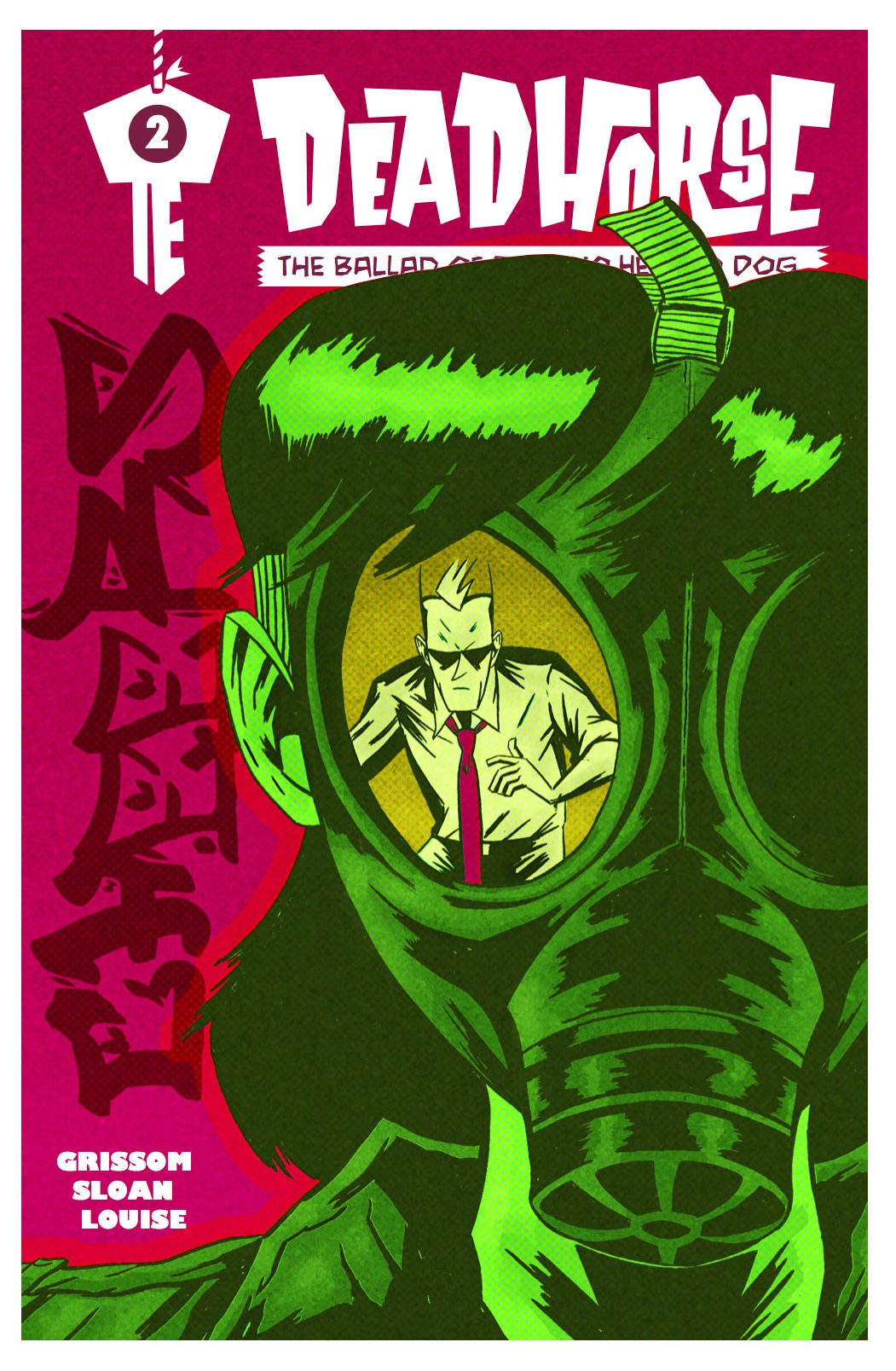

DEADHORSE: THE BALLAD OF THE TWO HEADED DOG #2
Writer: Eric GrissomArtist: Phil Sloan
Publisher: Frankenstein's Daughter
Reviewer: Lyzard
One of my biggest issues with DEADHORSE is the fact that the time in between issues is almost unbearable. I go through periods of looking forward to it, forgetting it, wondering if I missed the new issue, forgetting it, so on and so forth. That is an inevitable reaction when you've been waiting since January (or March, for the public) to get some answers. But it isn't just the emotional rollercoasters these delays cause that irks me. It is the fact that with a story as complicated as DEADHORSE you almost need an eidetic memory to keep track of it. You not only have to re-read issue #1 from this new run, but probably scan through the first series as well. This extra effort may at times be off-putting to new readers.
The stretched out publication of DEADHORSE, combined with its intricate and complex plot, isn't a new issue with the series. But it is with DEADHORSE: THE BALLAD OF THE TWO HEADED DOG #2 that I find the problem to be most prominent and therefore provide the most challenging reading as of yet.
I struggled so much with tracking this issue that I can hardly summarize the book coherently. You've got flashbacks, a slew of new characters, and the most cryptic dialogue yet to appear in a series that has provided some of the most enigmatic hints and images my brain has struggled to comprehend. What I can tell you for certain is that our main protagonist, William Pike, has been captured by some weird all-girl punk band, while unbeknownst to our hero or his enemies, Elise and Edgar survived one of the Temple of Damu's traps. That's about it. Anything in between--the specifics of conversations held, how these characters were connected--was shrouded in so much mysterious speech that they could have been written in another language and made about as much sense. DEADHORSE has always been far more about questions than answers. Usually writer Eric Grissom walks this line so well, but sadly not in this issue. There are no answers--only more puzzles to be solved.
What might be the most aggravating aspect to DEADHORSE: THE BALLAD OF THE TWO HEADED DOG #2 is that there is a good issue here, much of it being on artist Phil Sloan's shoulders. This book is his masterpiece. There are, as always, his little Easter Eggs that make the necessary re-reads worthwhile, but it is truly his creative and unique panel layout that shines here. His transitions from panel to panel are based on quirky logic, yet are filled with so many beautiful visual parallels that Sloan can seamlessly transition through time and space. The page layout is crafted so well that your eye is always drawn to the clues. The reader truly is a puppet on his string; Sloan controls how you read this story. All of that, and I have yet to talk of the content specifically. There is always one image in a DEADHORSE comic, a single drawing that gives me goosebumps. THE BALLAD OF THE TWO HEADED DOG #2 is no exception. It is comforting to know that even when the writing is sub-par, the visuals of DEADHORSE never cease to amaze me.
As for other unique elements, I've covered a couple of comics that have featured links to music, but rarely have they succeeded in seamlessly transitioning between listening and reading. DEADHORSE, on the other hand, has a fun conceit in which writer Eric Grissom directly states "stop reading, put it [the song referenced] on, and come back. Don't worry, we're not going anywhere. This is a book." The footnote is not blatant as to not draw your attention your way before you finish reading the page, but more importantly, the writing sounds natural to the book. Even better is the fact that listening to the song actually develops the characters. It isn't necessary to take a listen. I went through my first reading without stopping in my tracks; however, I'd recommend taking a listen at some point.
All that being said, no amount of visual wizardry and unique usage of meta-elements can redeem the issue. Last review, I said that THE BALLAD OF THE TWO HEADED DOG #1 was "stronger than nearly the entirety that preceded it." I will not be hyperbolic and say this following issue is worse than the cumulative past works. It is, however, the worst out of the bunch and for one reason alone: a poorly crafted plot. A single problem, yes, and yet a big one, otherwise I wouldn't harp on it so much. But perhaps, just as the series has always depended upon unexpected twists and turns to drive the story along, maybe this little bump is the road will wind its way back on course come issue #3.
Lyzard is Lyz Reblin, a graduate student at the University of Texas pursuing a master's degree in Media Studies... which is just a fancy way of saying she plays a lot video games, watches far too many horror films, and then tries to pass it all off as "research."
Every comic shop has them… battered long boxes jam-packed with dog-eared titles ranging from forgotten heroes of the 1970s to multiple copies of chromium-covered “collector’s item” comics from the Big Bust of the 1990s. But if you are patient, and dig deep enough, you just may find something special…
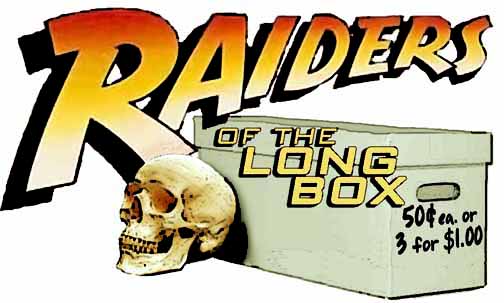
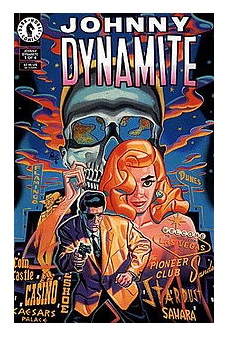 JOHNNY DYNAMITE #1-4, 1994
JOHNNY DYNAMITE #1-4, 1994Dark Horse
Hard-hitting 1950s detective fiction gets served up with a horror movie twist in this miniseries. Crime novelist and comics scribe Max Collins teamed up with artist Terry Beatty to put their spin on Pete Morisi’s pre-Comics Code private eye for a genre mashup that combines Mickey Spillane-esque mystery with B-movies, deals with the devil and the walking dead. Beatty’s clean, retro style (along with the knockout covers by Mitch O’Connell) makes this series a visual treat for those with an affection for the sleek lines of the ‘50s and ‘60s, while Collins’ story is pure pulp pleasure.
 THE SAVIOUR #1-6, 1990
THE SAVIOUR #1-6, 1990Trident Comics
One of Mark Millar’s earliest published works is this six issue limited series, wherein the titular superhero The Saviour is in actuality the Antichrist, masking his true nature behind a benevolent façade as he murders priests and infants to try to stop the second coming of Jesus Christ. Millar wears his influences on his sleeve in this comic; his writing style borrows heavily from Alan Moore’s MIRACLEMAN and V FOR VENDETTA, while his page structures echo Frank Miller’s THE DARK KNIGHT RETURNS, right down to the use of television screen panels. The black and white artwork (first issue by Daniel Vallely, the rest of the series by Nigel Kitching) is dark and somewhat muddy, but the overall effect adds to the sense of underlying horror that permeates this flawed but interesting work.
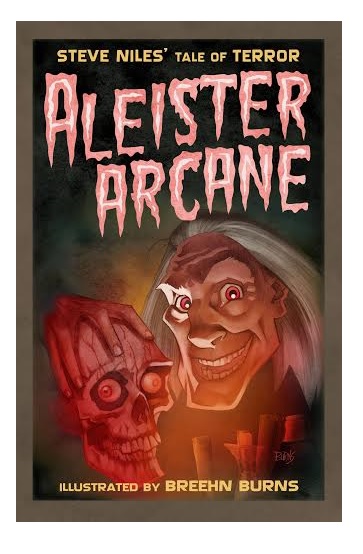 ALEISTER ARCANE #1-3, 2004
ALEISTER ARCANE #1-3, 2004IDW
Steve Niles is one of those writers whose work never quite clicks for me; I always feel that he could take his ideas and push them further than he does. Nonetheless, some of his comics still pack an entertaining punch, and ALEISTER ARCANE is one of them. Niles takes the American icon of the Baby Boomer generation, the late night television horror movie host, and uses it as a catalyst for horrors that jump off the screen and into the real world. The real reason to seek out this comic, however, is the spectacularly eerie artwork by Breehn Burns. Burns combines energetic, stylized figures with a painting technique reminiscent of John Bolton, making the artwork both atmospheric and dynamic.
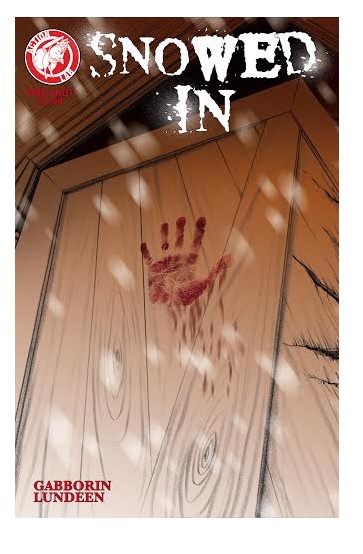 SNOWED IN One-Shot, 2011
SNOWED IN One-Shot, 2011Action Lab Comics
This single issue story is by no means a great comic book, yet for all its failings, SNOWED IN manages to put forth an oppressive moodiness that many horror comics fail to achieve. Shawn Gabborin’s story starts in a way that at first feels cliché—a group of friends vacationing at a remote cabin in the woods—but as the story progresses, Gabborin avoids the standard horror tropes and instead creates a compelling psychological thriller. Rick Lundeen’s artwork is serviceable; his figures tends towards stiffness and the grayscale coloring is overworked in places, but he still manages to sell the creeping terror that pervades this little gem.
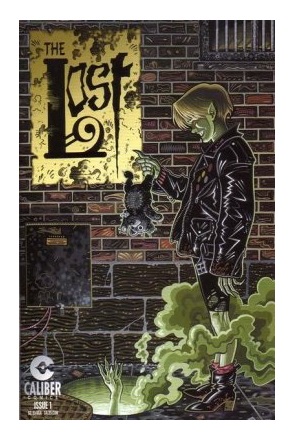 THE LOST #1-3, 1996
THE LOST #1-3, 1996Caliber (#1), Chaos (#2-3)
One of the frustrating aspects of digging through the long boxes to find hidden treasures is that sometimes those fantastic finds—especially the independent and small-press published comics—are maddeningly incomplete. Such is the case with THE LOST, a horrific re-imagining of the classic characters from “Peter Pan.” Marc Andreyko shifts Peter and his Lost Boys from Never Never Land to the big city, transforming them into a group of streetwise vampires. Despite the surface similarity in concept, this is not a rehashed version of the classic ‘80s flick THE LOST BOYS; rather, Andreyko and artists Galen Showman, Jay Geldhof and Mark Ricketts give J.M. Barrie’s characters a darker and more sexualized twist that feels more in line with the style of storytelling that Neil Gaiman was doing on THE SANDMAN. Sadly, the series never made it past the third issue and never will be told in full, but these few comics provide a tantalizing promise of what might have been if the comic bust of the 1990s hadn’t meant the end of most of the small publishers.
When released from his bottle, the Imp transforms into Stephen Andrade, an artist/illustrator/pirate monkey painter from New England. He's currently hard at work interpreting fellow @$$Hole Optimous Douche's brainwaves and transforming them into pretty pictures on AVERAGE JOE, an original graphic novel to be published by Com.x. You can see some of his artwork here.
Proofs, co-edits & common sense provided by Sleazy G
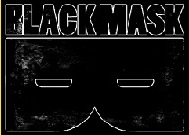 The next level of comic book excellence is a click away at BLACK MASK STUDIOS!
The next level of comic book excellence is a click away at BLACK MASK STUDIOS! Want more in all things Geek?
Want more in all things Geek?Check out our friends at PoptardsGo for podcasts, reviews, and more!
 And if you still need more geek in your life, check out Part-Time Fanboy for more geeky goodness on comics, movies, and more!
And if you still need more geek in your life, check out Part-Time Fanboy for more geeky goodness on comics, movies, and more!Finally, check out AICN COMICS on Facebook and Comixpedia!
